
Ashton Court is a mansion house and estate to the west of Bristol in England. Although the estate lies mainly in North Somerset, it is owned by the City of Bristol. The mansion and stables are a Grade I listed building. Other structures on the estate are also listed.

Cobham Hall is an English country house in the county of Kent, England. The grade I listed building is one of the largest and most important houses in Kent, re-built as an Elizabethan prodigy house by William Brooke, 10th Baron Cobham (1527–1597). The central block was rebuilt 1672–82 by Charles Stewart, 3rd Duke of Richmond, 6th Duke of Lennox (1639–1672).

Horton Court is a stone-built 16th century manor house in Horton, near Chipping Sodbury, South Gloucestershire, England. It is a grade I listed building.
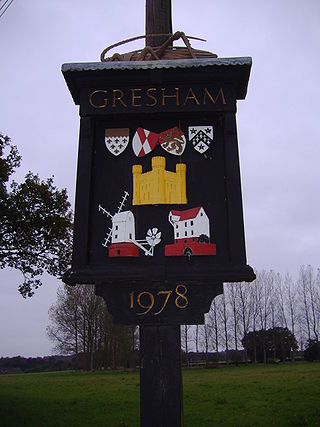
Gresham is a village and civil parish in North Norfolk, England, five miles (8 km) south-west of Cromer.

Matlaske is a village and a civil parish in the English county of Norfolk. The village is 21.6 miles (34.8 km) North-north-west of Norwich, 9.3 miles (15.0 km) south-west of Cromer and 136 miles (219 km) north-north-east of London. The nearest railway station is at Sheringham for the Bittern Line which runs between Sheringham, Cromer and Norwich. The nearest airport is Norwich International Airport. The parish of Matlask in the 2001 census, a population of 124, increasing to 139 at the 2011 Census. For the purposes of local government, the parish falls within the district of North Norfolk.
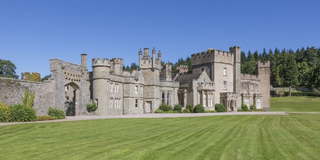
Stanage Park is a Grade II* listed Welsh country house set in a large park located some 3 miles (4.8 km) east of Knighton, Powys near the settlement of Heartsease. The extensive parkland and the house were laid out by Humphry Repton and his son, John Adey Repton, in the early nineteenth century. Repton's picturesque parkland improvements, castellated house and enclosed garden survive almost intact. The estate is the last and most complete of his three recognized Welsh landscape commissions.
This is a list of Sheriffs of Norfolk and Suffolk. The Sheriff is the oldest secular office under the Crown and is appointed annually by the Crown. He was originally the principal law enforcement officer in the county and presided at the Assizes and other important county meetings. After 1576 there was a separate Sheriff of Norfolk and Sheriff of Suffolk.

Paston is a village and civil parish in the English county of Norfolk. The village is 4 miles (6.4 km) north-east of North Walsham and 9.1 miles (14.6 km) south-east of Cromer. It is 19.2 miles (30.9 km) north-east of the city of Norwich. The village sits astride the coast road between Mundesley and Bacton. The nearest railway station is at North Walsham for the Bittern Line which runs between Sheringham, Cromer and Norwich. The nearest airport is Norwich International.

Crewe Hall is a Jacobean mansion located near Crewe Green, east of Crewe, in Cheshire, England. Described by Nikolaus Pevsner as one of the two finest Jacobean houses in Cheshire, it is listed at grade I. Built in 1615–36 for Sir Randolph Crewe, it was one of the county's largest houses in the 17th century, and was said to have "brought London into Cheshire".
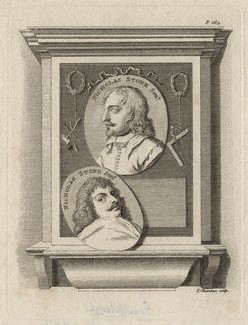
Nicholas Stone was an English sculptor and architect. In 1619 he was appointed master-mason to James I, and in 1626 to Charles I.
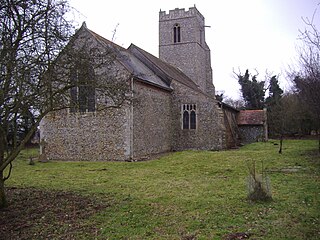
North Barningham is a hamlet within the civil parish of Gresham in the English county of Norfolk. The hamlet is 7 miles (11 km) south-west of Cromer, 23.2 miles (37.3 km) north-northwest of Norwich and 138 miles (222 km) north-northeast of London. The hamlet lies 4.6 miles (7.4 km) south of the town of Sheringham. The nearest railway station is at Sheringham for the Bittern Line which runs between Sheringham, Cromer and Norwich. The nearest airport is Norwich International Airport. The hamlet is within the parish of Gresham, which had, in the 2001 census, a population of 443. For the purposes of local government, the hamlet falls within the district of North Norfolk.

Oxnead is a lost settlement and former civil parish, now in the parish of Brampton, in the Broadland district, in the county of Norfolk, England. It is roughly three miles south-east of Aylsham. It now consists mostly of St Michael's Church and Oxnead Hall. The hall was the principal residence of the Paston family from 1597 until the death of William Paston, 2nd Earl of Yarmouth in 1732. Under Sir William Paston (1610–1663), Oxnead was the site of several works by the architect and sculptor, Nicholas Stone, master-mason to Kings James I and Charles I. In 1931 the parish had a population of 66.

Rode Hall, a Georgian country house, is the seat of the Wilbraham family, members of the landed gentry in the parish of Odd Rode, Cheshire, England. The estate, with the original timber-framed manor house, was purchased by the Wilbrahams from the ancient Rode family in 1669. The medieval manor house was replaced between 1700 and 1708 by a brick-built seven-bay building; a second building, with five bays, was built in 1752; the two buildings being joined in 1800 to form the present Rode Hall.
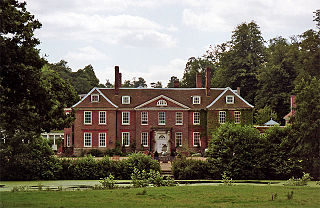
Chilston Park is a country house in Boughton Malherbe, Kent, England. Started in the 15th century, the house has been modified many times and is a Grade I listed building, currently operated as a country house hotel.
Sir Henry Heydon was the son of John Heydon of Baconsthorpe, Norfolk, 'the well-known opponent of the Paston family'. He married Anne Boleyn, the daughter of Sir Geoffrey Boleyn, great-grandfather of Henry VIII's queen Anne Boleyn.

Sheringham Hall is a Grade II* listed building which stands in the grounds of Sheringham Park which is in the care of the National Trust. The house is close to the village of Upper Sheringham in the English County of Norfolk in the United Kingdom. The hall was built on the instructions of Abbot and Charlotte Upcher who engaged the architect and landscape designer Humphry Repton and his son John Adey Repton to build the house and to present designs for the surrounding parklands. Humphry worked on the landscape and John designed the hall. The house is privately occupied by tenants and is not open to the public but can be viewed from the surrounding parkland.

Mannington Hall is a moated medieval country house in the civil parish of Itteringham near the village of the same name and is in the English county of Norfolk within the United Kingdom. The first manor house built on this site was constructed in the 15th century. Having been owned by the Walpole family since the 18th century, it is now the seat of Robert Walpole, 10th Baron Walpole.

Honing Hall is a Grade II* listed building which stands in a small estate close to the village of Honing in the English county of Norfolk within the United Kingdom. It was built in 1748 for a wealthy Worstead weaver called Andrew Chamber.

Bayfield Hall is a Grade II* listed building which stands in a small estate close to the village of Letheringsett and the hamlet of Glandford in the English county of Norfolk within the United Kingdom. The house that stands today was built in the last part of the 18 century replacing an earlier manor house thought to have been built in the 16 century. That house had been constructed of an early medieval manor house.

Burnham Westgate Hall is a Georgian country house near Burnham Market, Norfolk, about 2 mi (3.2 km) south of the north Norfolk coast. It was remodelled in Palladian style in the 1780s by John Soane: it was Soane's first substantial country house commission, immediately before he started Letton Hall in 1784.























